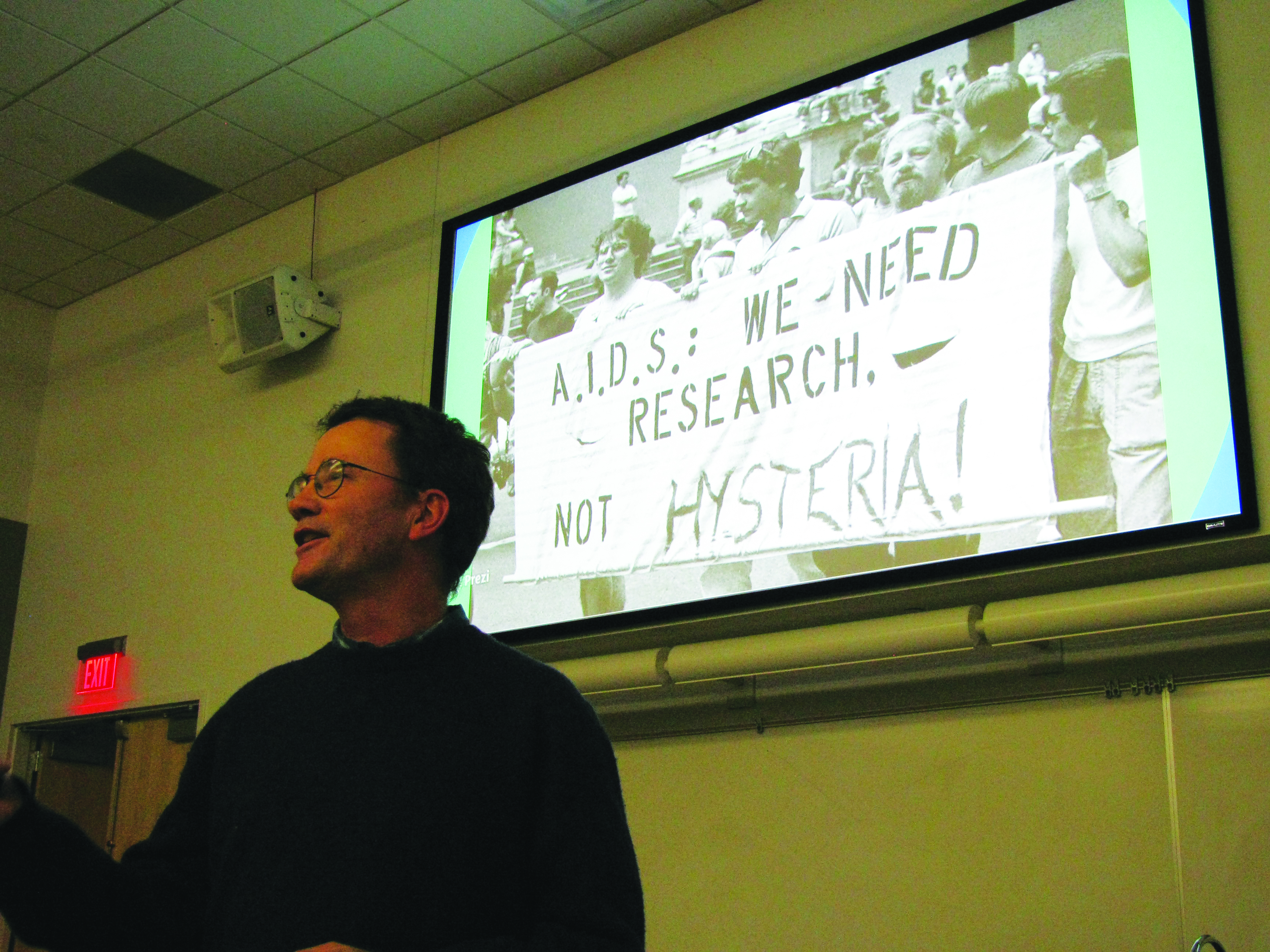Megan Hazuga-
“There are more people today living with HIV than there were a month ago, a year ago, a decade ago, and even though we’ve seen a number of advances, that number is continuing to climb fairly steeply. There are currently 36.7 million people with HIV worldwide,” said Stout’s own James Burritt at his seminar about HIV/AIDS this past December 1, also known as World AIDS Day.
Burritt is a professor in the Biology department with a Ph. D in microbiology. He strongly believes in the importance of educating people about the HIV virus.
The presentation began with a dedication to Burritt’s cousin, Richard Hamilton, who died of the disease in 1989. Burritt said that event has been a large motivation for him to research and inform people on the disease.
Burritt explained how the first infections of HIV were reported in California in 1981, and at first the virus was referred to as “GRID” or “gay cancer.” Because of this, Burritt stated, the media shied away from reporting on the epidemic. This, as well as a lack of government involvement, led to a massive spike of diagnoses in the late ‘90s.
Homosexual men are at a higher risk for contracting the HIV virus, and those that are positive are left with a heavy stigma. “No one deserves HIV,” said Burritt. “HIV isn’t the only STD contracted by gay men, so why does it have the biggest stigma?”

One of the things Burritt emphasized was that HIV and AIDS are not interchangeable terms. He explained that HIV is the initial virus that one contracts, and AIDS is the manifestation of said virus and its attack on one’s immune system.
“With correct treatment, that timespan [before AIDS manifests itself] can be extended to as long as 50 years. So people that are affected today that have been tested can extend their clinical latency for decades. Plus, the concentration of the virus is much lower while they’re being treated.”
“This is a disease we must not turn our back on. Think about when you last heard or saw an important headline about HIV/AIDS; it has weirdly fallen off the radar of a lot of media outlets,” Burritt stated.
He went on to explain how the most important parts of prevention are: education, condoms, sterile needles, using personal lubricants, proper testing and pre-emptive medications for those at high-risk. On top of these, Burritt also stated the importance of defeating the stigma of the HIV virus, as well as supporting research and those that are infected.
Burritt’s presentation is an important step in educating students about the disease, and he believes it is important to spread awareness and keep fighting for a cure.
